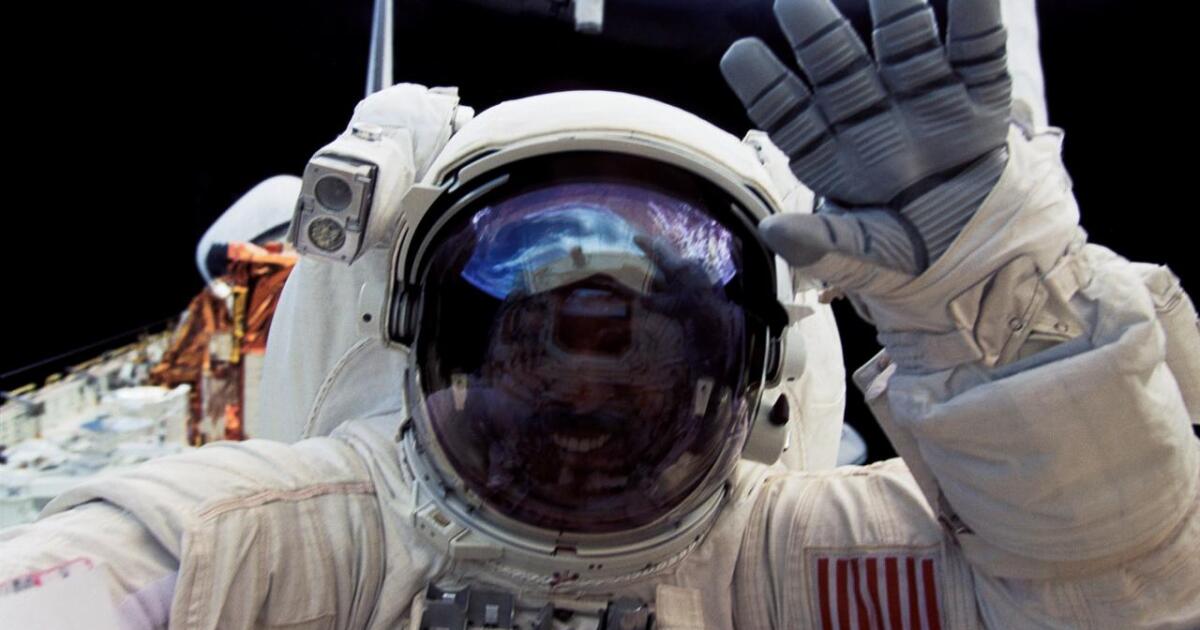What would you ask an astronaut?
Kids ask the best questions. That’s why we’re turning the mic over to young space enthusiasts wanting to ask an astronaut their burning questions about space exploration.
Veteran NASA astronaut Winston Scott joined our show and answered these burning questions.
Our eager space enthusiasts asked Scott some intriguing questions like, “what it’s like to eat in space? Is the food freeze dried?”. While space travelers used to eat food in paste form, Winston explained that the food now is quite like what someone would eat on Earth—only freeze dried sometimes.
“Nowadays, our food is like real food,” Scott said. “We eat with forks and knives and spoons, but we have to eat it very carefully, because it will get away from you and float away. For example, if I want it to have scrambled eggs for breakfast, I have to prepare my scrambled eggs. We put the water back into it, rehydrate it, then I would take my spoon or my fork and very carefully, reach into the packet and take out only where I want to eat.”
Aside from food, one curious kid asked Scott about using the bathroom in space, specifically, “What happens to the waste?” Scott explained just like how people on Earth recycle water, wastewater is cleaned in space too.
“We drink recycled wastewater here on Earth,” Scott said. “It’s either recycled by good old mother nature, or it’s recycled at the water reclamation plant. It’s as clean as any water any place on Earth, it’s very important that we were you recycle everything that we possibly can in space.”
If you’ve got a question for an astronaut, email us your voice memo at arewethereyet@cfpublic.org Please be sure to include your first name and age.
A glimpse at an astro-diet
While many people think that space food is all freeze-dried snacks and Tang, food in outer space is a lot tastier than we may think.
Astronauts, cosmonauts, and anyone who makes the journey into orbit have a wide range of foods to choose from in their orbital pantry; ranging from candy bars to meals that reflect their culture and country.
Space food scientist Vickie Kloeris published a memoir of her three decades at NASA, carefully planning meals for the people that leave this planet in her new book Space Bites: Reflections of a NASA Food Scientists. After meeting some of the food scientists at NASA, Kloeris said she hoped her journey would lead her to NASA.
“I said, that has got to be the coolest job food scientists could have,” Kloeris said. “So, if you ever have an opening, call me. And about 18 months later, I got a call. They weren’t specifically looking for me. But they said, would you know anybody who would be interested? And I’m like, yeah, I am interested.”
Kloeris was a food scientist during the shuttle program at NASA, and for some of those crews, food played a key role while they were in orbit. Kloeris said being in micro-gravity can cause congestion for space travelers, but a simple dish helped combat hunger and stuffy noses.
“We had a freeze-dried shrimp cocktail,” Kloeris said. “It was powdered red sauce that had horseradish in it. And so, it had a nice little kick, so it was very popular among the crew. Because when they were congested, that aroma, that flavor still got through. So that was extremely popular item during the during the shuttle program.”
Above all, Kloeris said her biggest mission was to make sure everyone in space felt connected to home with the food they ate during their mission. As the crew bonds with work and their daily routines, they also bond over food.
“For long duration, especially on [the International Space Station], the crew members will take special items in their preference containers for holidays, for birthdays, for other special occasions, because psychology is so important,” Kloeris said. “And the shared meals, the psychology of a shared meal among the crew becomes a lot more important on long duration.”
